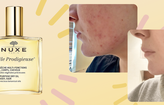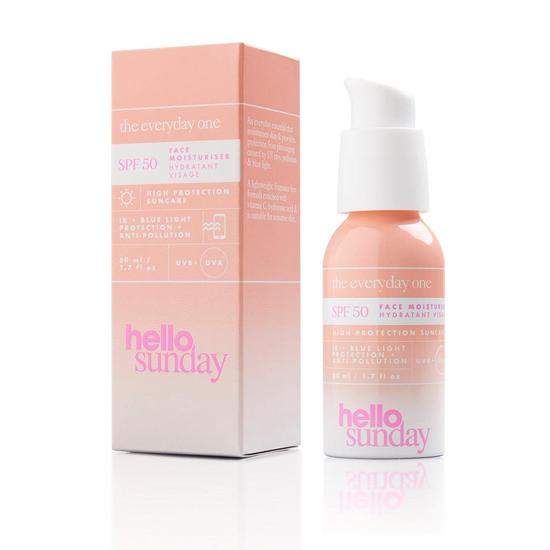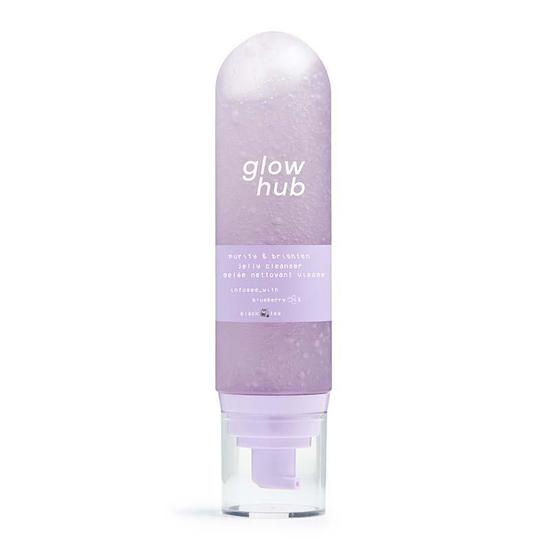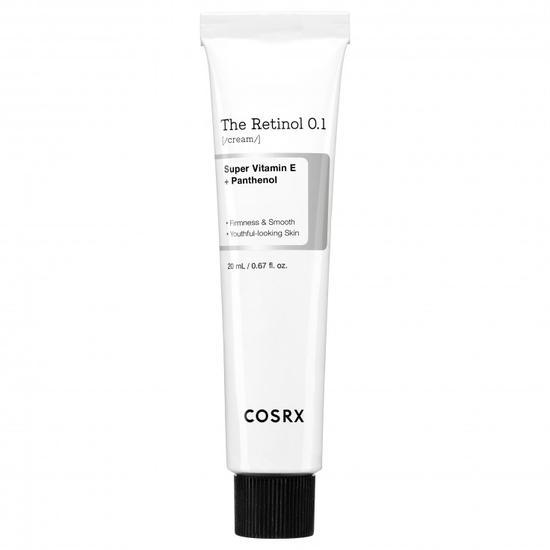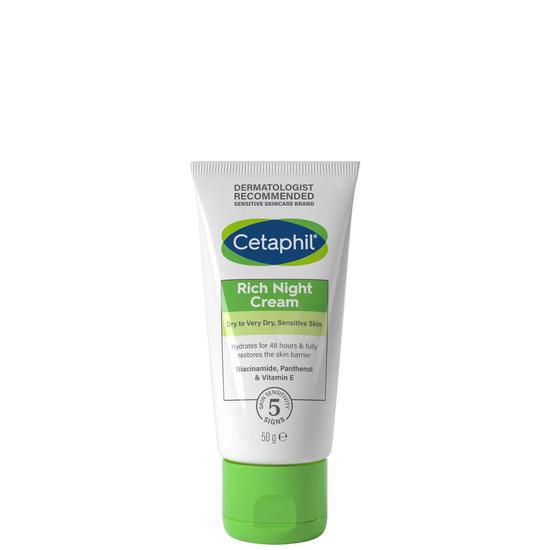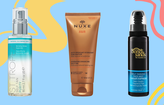
- Skin
- Azelaic Acid With Retinol
Can You Use Azelaic Acid With Retinol?
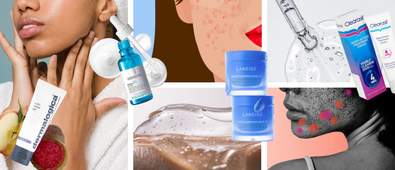
Acne and skin-texture/hyperpigmentation often, for many people, go hand-in-hand. In such cases, the importance of finding the right skincare ingredients and combinations is essential.
This is where actives like retinol and azelaic acid come in: both have skin texture and discolouration-improving properties, but how do they work in tandem?
Can You Use Azelaic Acid With Retinol?
Yes—but introduce slowly.
Azelaic acid and retinol can complement each other beautifully when used thoughtfully. Azelaic acid calms inflammation and targets discolouration, while retinol works deeper to renew skin. When combined, they can be especially effective for acne-prone, rosacea-prone, or uneven skin.
However, both ingredients can cause initial dryness or sensitivity. To avoid irritation, introduce one at a time and consider using azelaic acid in the morning and retinol at night.
What Does Azelaic Acid Do For Skin?
Azelaic acid is a naturally occurring compound with anti-inflammatory, antibacterial, and keratolytic properties. It’s particularly effective at targeting acne, rosacea, and hyperpigmentation, while being gentler than many other actives.
It works by unclogging pores, reducing redness, and inhibiting melanin production, making it ideal for sensitive or reactive skin. Azelaic acid is one of the few ingredients that calms while actively treating—balancing efficacy with tolerance.
Key Benefits Of Azelaic Acid Include:
- Reduces Redness and Rosacea: Calms visible redness and helps soothe reactive skin conditions like rosacea.
- Fades Hyperpigmentation: Targets dark spots, melasma, and uneven tone, improving overall clarity.
- Unclogs Pores: Mild exfoliating properties help keep pores clear and prevent comedones.
- Improves Clarity: Promotes a brighter, more even complexion with consistent use.
- Antimicrobial Action: Fights acne-causing bacteria and helps prevent flare-ups.
- Tolerable for Sensitive Skin: Offers a gentler alternative to harsher actives, suitable for reactive complexions.
(Source: Cleveland Clinic, Wikipedia, Elle UK)
Azelaic Acid: Well-Tolerated Across Most Skin Types
Acne-Prone Skin: Calms inflammation and targets the bacteria that contribute to breakouts.
Rosacea or Redness-Prone Skin: Soothes irritation and helps reduce persistent redness or flushing.
Sensitive Skin: Exceptionally well-tolerated and gentle, making it ideal for skin that reacts to stronger acids.
Combination Skin: Balances uneven tone while improving clarity without over-drying.
What Does Retinol Do For Skin?
Retinol is a derivative of vitamin A and one of the most well-researched ingredients in dermatology for addressing signs of ageing, acne and uneven skin texture. It works by increasing cell turnover, meaning it helps your skin shed dead cells faster and generate fresh, new ones underneath. This process visibly reduces fine lines, refines pores, fades dark spots, and smooths the overall texture of the skin.
Retinol also boosts collagen production over time, which supports firmer, more elastic skin. However, its potency comes with a catch—it can cause dryness, sensitivity, and peeling if not introduced gradually or paired with barrier-supporting ingredients like niacinamide or hyaluronic acid.
Key Benefits Of Retinol Include:
- Boosts Cell Turnover: Speeds up the rate at which skin renews itself, helping to shed dead cells and reveal smoother, healthier skin beneath.
- Reduces Fine Lines and Wrinkles: Stimulates collagen production, softening the appearance of existing wrinkles and preventing new ones from forming.
- Clears Acne: Helps prevent clogged pores, reduces breakouts, and treats existing blemishes by normalising skin cell behaviour.
- Evens Skin Tone: Fades dark spots, sun damage, and post-acne hyperpigmentation for a more uniform complexion.
- Improves Texture: Refines rough patches and smooths out uneven or bumpy areas with consistent use.
- Enhances Firmness and Elasticity: Promotes collagen and elastin synthesis, helping skin appear firmer and more youthful over time.
(Source: Cleveland Clinic)
Retinol: Powerful But Needs Tailoring By Skin Type
Normal to Dry Skin: Gradually introduce retinol and pair it with hydrating ingredients, such as hyaluronic acid, to reduce dryness and sensitivity.
Oily and Acne-Prone Skin: Highly beneficial due to its exfoliating properties, helping to manage oiliness and reduce blemishes.
Sensitive Skin: Start slowly with a lower concentration, initially applying only a few times a week to minimise irritation. Buffer with moisturiser.
Mature Skin: Great for improving fine lines, firmness, and sun damage—build up use slowly for long-term results.
Why Do Azelaic Acid And Retinol Work Well Together?
Azelaic acid and retinol are a powerhouse pairing for treating acne, pigmentation, and uneven skin tone—especially on sensitive or redness-prone skin.
Retinol renews the skin by increasing cell turnover and collagen production. However, it can also trigger irritation or peeling. Azelaic acid steps in as a calming, anti-inflammatory agent with added antibacterial and pigment-fading benefits. It’s gentler than most acids, making it ideal for soothing the side effects of retinol without diminishing its impact.
Together, they offer a balanced routine: retinol targets signs of ageing and acne, while azelaic acid evens tone, calms redness, and reduces blemishes—without adding undue stress to your skin.
Comparing Azelaic Acid And Retinol Side-By-Side
- Primary function: Azelaic acid – Anti-inflammatory, evens tone | Retinol – Cell turnover and rejuvenation
- Reduces fine lines/wrinkles: Azelaic acid ✅ Supports anti-ageing | Retinol ✅ Highly effective
- Improves skin texture: Azelaic acid ✅ Refines uneven texture | Retinol ✅ Significantly smooths
- Fades hyperpigmentation: Azelaic acid ✅ Fades pigmentation | Retinol ✅ Strongly effective
- Treats acne & blemishes: Azelaic acid ✅ Treats acne gently | Retinol ✅ Effective by unclogging pores
- Enhances skin firmness: Azelaic acid ❌ Limited firming | Retinol ✅ Boosts collagen, improves elasticity
- Boosts hydration: Azelaic acid ✅ Non-drying | Retinol ❌ Can cause dryness
- Improves skin barrier: Azelaic acid ✅ Barrier-friendly | Retinol ❌ May weaken initially
- Potential irritation: Azelaic acid ✅ Well tolerated | Retinol ⚠️ Can cause peeling
- Suitable for sensitive skin: Azelaic acid ✅ Very suitable | Retinol ⚠️ Use with care
Azelaic acid also works well with
Niacinamide – Enhances calming and brightening effects while supporting the skin barrier.
Hyaluronic Acid – Keeps skin hydrated and reduces the risk of irritation from azelaic acid use.
Panthenol (Pro-Vitamin B5) – Deeply soothes and hydrates, reducing the risk of irritation from regular azelaic acid use.
Retinol also works well with
Bakuchiol – A gentler plant-based retinol alternative that can complement retinol’s benefits while reducing potential irritation.
Allantoin – Soothes the skin and promotes healing, helping to reduce flaking and dryness.
Ceramides – Supports barrier repair and reduces the harshness of retinol during early use.
How To Apply Azelaic Acid And Retinol Together
- Cleanse your face and let it dry completely.
- Apply azelaic acid in the morning to treat inflammation and brighten skin.
- At night, after cleansing, apply retinol and allow 5–10 minutes for absorption.
- Use a gentle moisturiser after each active to buffer sensitivity.
Always wear SPF during the day, as retinol and azelaic acid can increase sensitivity.
A.M.
P.M.
FAQs
Is it okay to use azelaic acid in the morning and retinol at night?
This can be the most effective way to pair them. Azelaic calms redness and pigmentation during the day, while retinol boosts regeneration overnight.
What skin concerns does this combo target?
Together, they tackle acne, uneven skin tone, rosacea, fine lines and dullness. Azelaic is especially helpful in reducing retinol-induced redness.
Any layering rules?
If using both at night (not for beginners), apply azelaic acid first, wait for a minimum of 10 minutes, then follow with retinol. Use a barrier cream to buffer potential irritation.
Face serums are a great way to introduce concentrated amounts of all the best skincare actives into your routine, so check out our compilation of all the Best Budget Face Serums to Try, especially if you're looking to explore some new standouts without breaking the bank. For those of you who already know what you're looking for (and if what you're looking for is retinol), our list of The Best Retinol Serums For A Revived Complexion is perfect for you.

Written by Maria Mukaranda
Maria’s background is rooted primarily in creative media and a love for all things written, expressed through experience both online and in print; for creative platforms spanning from music to fashion to beauty.
Top Posts

